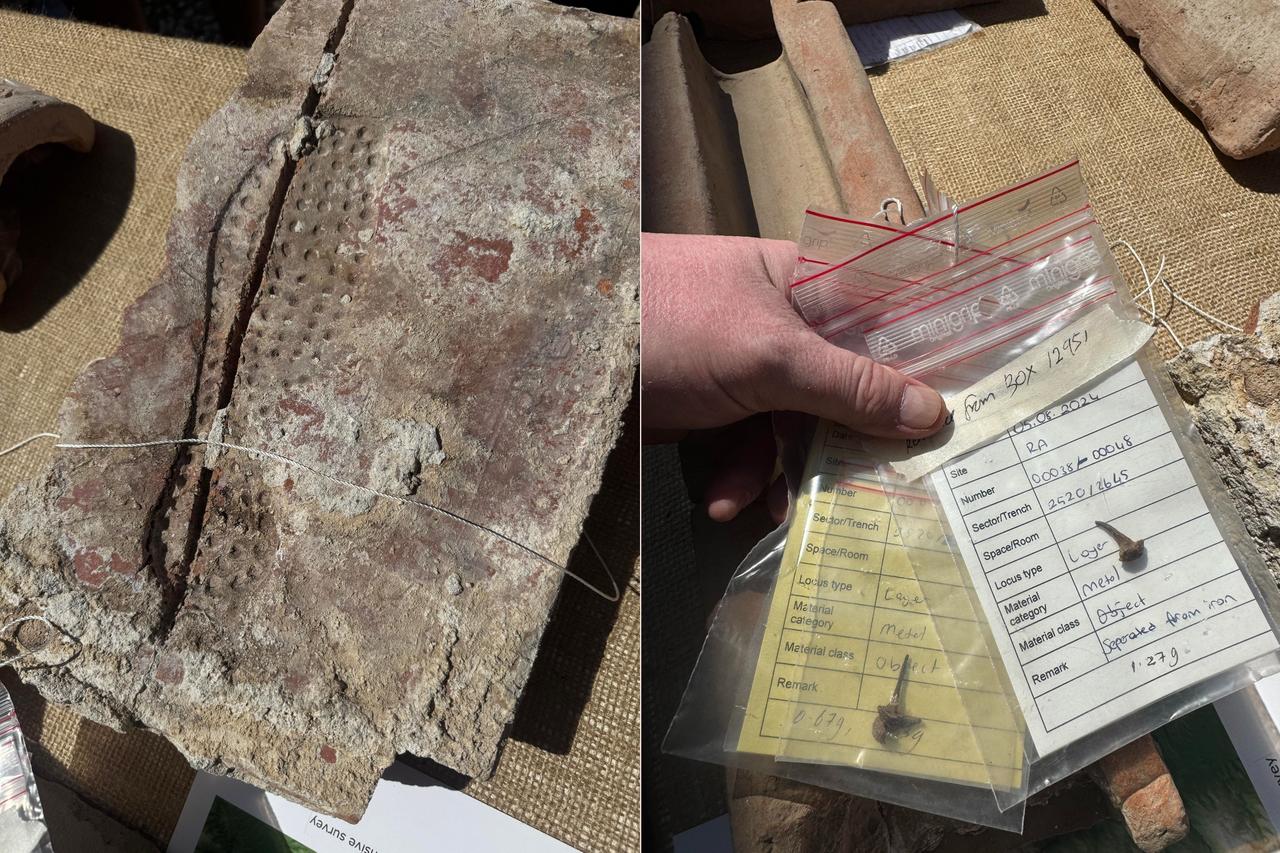
Archaeologists excavating the ancient city of Sagalassos in Türkiye’s Burdur province have identified a 2,000-year-old footprint impressed on a clay roof tile.
The mark is believed to have been left by a woman wearing a Roman spiked shoe, known as caligae, while the tile was still drying.
The site, which has been on UNESCO’s Tentative List of World Heritage since 2009, has revealed not only monumental Roman architecture but also intimate traces of daily life.
Experts say the footprint stands out as one of the rare tangible links to individuals who lived in the city nearly two millennia ago.
Professor Jeroen Poblome from KU Leuven University, who has worked at Sagalassos for 35 years, explained that researchers had long found different types of iron studs during excavations. Until now, their exact function had been uncertain.
Microscopic study of the footprint confirmed that longer nails were placed around the shoe’s edges, while shorter ones reinforced the sole.
According to Poblome, the footprint corresponds to a shoe roughly size 37 in modern European measurements. The relatively small dimensions led researchers to conclude that the shoe belonged to a woman, highlighting the active role women played in Roman society.
The find has encouraged the excavation team to reconstruct the leather footwear based on the stud patterns and size.
“This rare footprint allows us to clearly identify the shoe type,” Poblome noted, adding that the team will now separate and catalogue the large number of iron studs already found in storage.
These materials will guide the reconstruction of both shoes and sandals used in rural Roman settings.
Researchers believe that recreating the footwear will help shed light on how Romans adapted their attire to the rugged Anatolian landscape and climate.
Since the start of large-scale excavations in 1989 under Professor Marc Waelkens, Sagalassos has yielded monumental finds, including colossal statues of Emperors Hadrian and Marcus Aurelius, friezes of dancing girls, and sculptures of deities such as Nike, Dionysos, and Nemesis.
The site is also home to the Antonine Fountain, still fed by ancient water channels.
Recent campaigns have brought to light statues of the sphinx-god Tutu, the moon god Men, and Hermes. Together with the latest discovery of the footprint, these finds illustrate how Sagalassos offers an extraordinary view into both the grandeur of Roman public life and the personal traces left by its inhabitants.